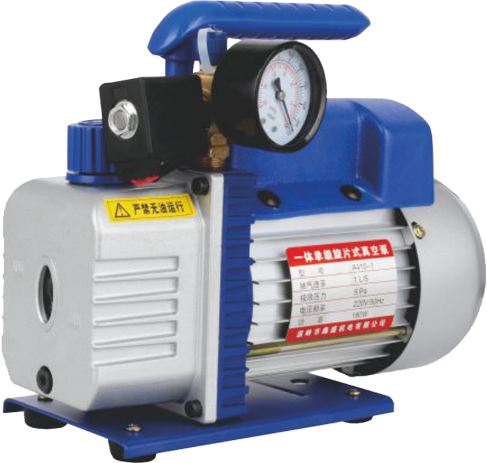Jan 17, 2025
In modern air conditioning (AC) systems, ensuring that water drainage and refrigerant vacuuming are handled effectively is crucial for performance. Two essential components play key roles in these systems: the Air Conditioning Electric Condensate Drain Pump and the Dual Voltage Refrigerant Vacuum Pump. Both devices are designed to solve specific challenges within HVAC systems, contributing to energy efficiency, system longevity, and overall comfort.

Air conditioning units, particularly those used in residential and commercial applications, generate condensate during the cooling process. As warm air is cooled by the system's evaporator coil, moisture from the air is condensed into water, which needs to be properly drained away to prevent damage or inefficiency. In many cases, gravity drainage may not be sufficient, especially in buildings with complex layouts or multi-story installations. This is where the Air Conditioning Electric Condensate Drain Pump comes in.
The primary role of an electric condensate drain pump is to move the accumulated condensate water away from the unit and direct it to an appropriate drainage location. The pump works by collecting the water in a reservoir, then activating a pump mechanism to push the water through a drainage pipe to a suitable exit point. This is especially important in settings where the AC unit is located in basements, attics, or other spaces where gravity drainage is not feasible.
Electric condensate drain pumps are often used in combination with float switches that detect the water level in the reservoir. When the water reaches a predetermined level, the switch activates the pump, ensuring that excess moisture is removed before it can overflow and cause damage to the unit or surrounding areas. This process prevents water damage, mold growth, and system inefficiencies.
These pumps are also valuable in enhancing the longevity of air conditioning systems. When water is not properly drained, it can corrosion and blockages within the system, reducing its efficiency and causing costly repairs. With the proper use of an electric condensate drain pump, these issues are avoided, ensuring that the HVAC system continues to function smoothly for years.
Dual Voltage Refrigerant Vacuum Pumps offer a practical solution to a common challenge in the HVAC and refrigeration industries: the need for flexible, reliable power supply in diverse operational environments. These pumps are designed to operate on both 110V and 220V electrical supplies, which makes them suitable for a broad range of applications across different geographical locations, as well as adaptable for both residential and commercial use.
One of the primary problems that Dual Voltage Refrigerant Vacuum Pumps solve is the need for versatile and easily portable equipment. HVAC technicians often work in areas where the power supply may vary, depending on the location or the type of building. In North America, for example, 110V is the standard voltage, while in many parts of Europe and Asia, 220V is more common. A dual voltage pump can be easily switched between these power sources without the need for additional equipment, allowing technicians to work efficiently no matter where the job site is located.
This flexibility is especially valuable for service technicians who regularly travel to different regions or work in environments where they might encounter varying electrical standards. Instead of carrying multiple pumps or dealing with the hassle of converters, a dual voltage pump simplifies the process, making it more convenient and cost-effective.
Moreover, dual voltage refrigerant vacuum pumps help to eliminate potential issues related to incorrect voltage usage. Using a vacuum pump that is not designed for the correct voltage can result in inefficient performance, damage to the pump, or even safety hazards. By providing the option to switch between 110V and 220V power, these pumps ensure that users can always operate the equipment at its capacity, regardless of the local electrical infrastructure.
Another problem addressed by dual voltage refrigerant vacuum pumps is energy efficiency. In some locations, the availability of a lower voltage supply (110V) may be more cost-effective in terms of electricity consumption, while in other areas, a higher voltage (220V) might provide better power efficiency. Dual voltage pumps allow users to choose the energy-efficient option, depending on the specific circumstances, ultimately reducing operational costs.